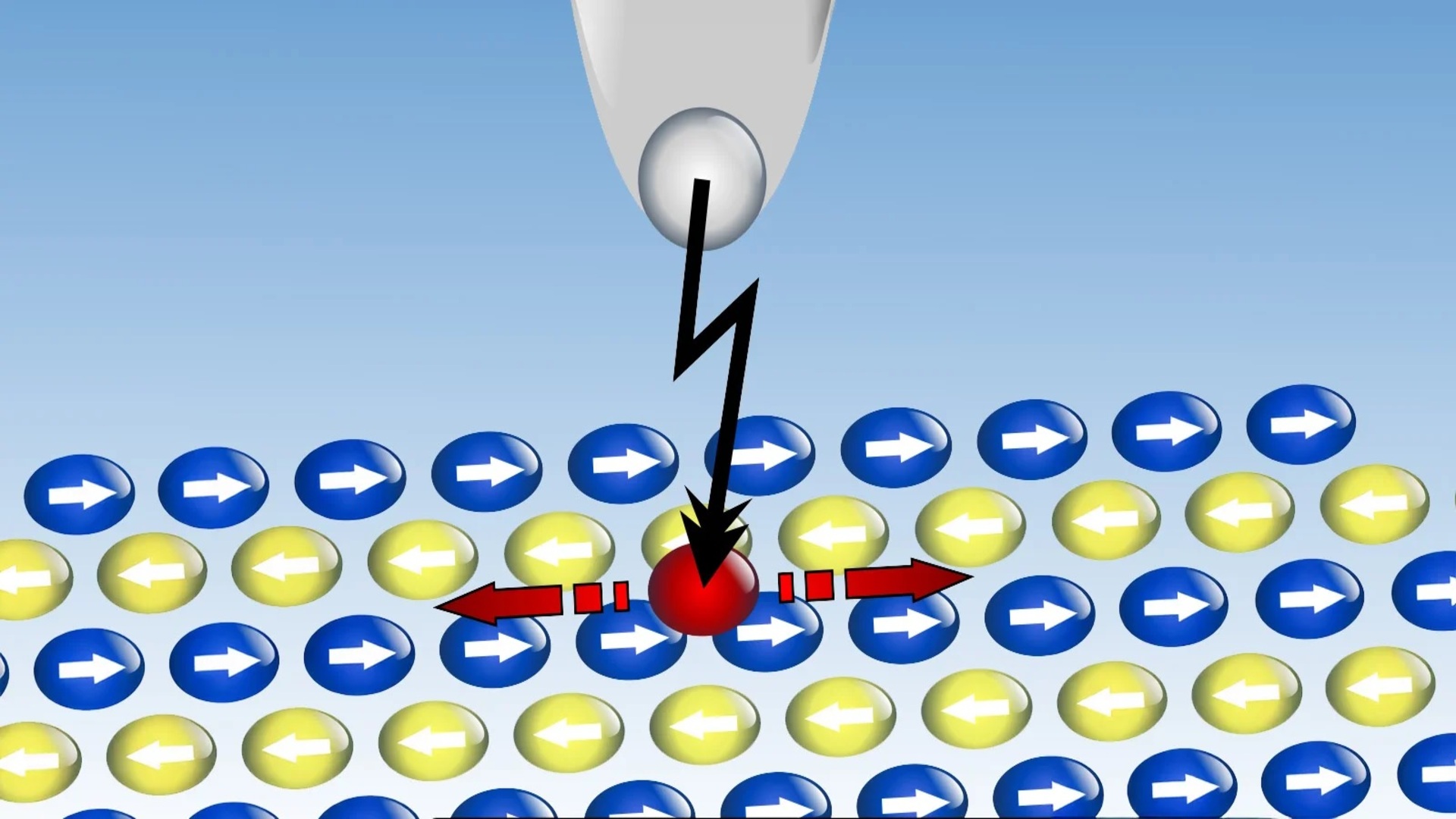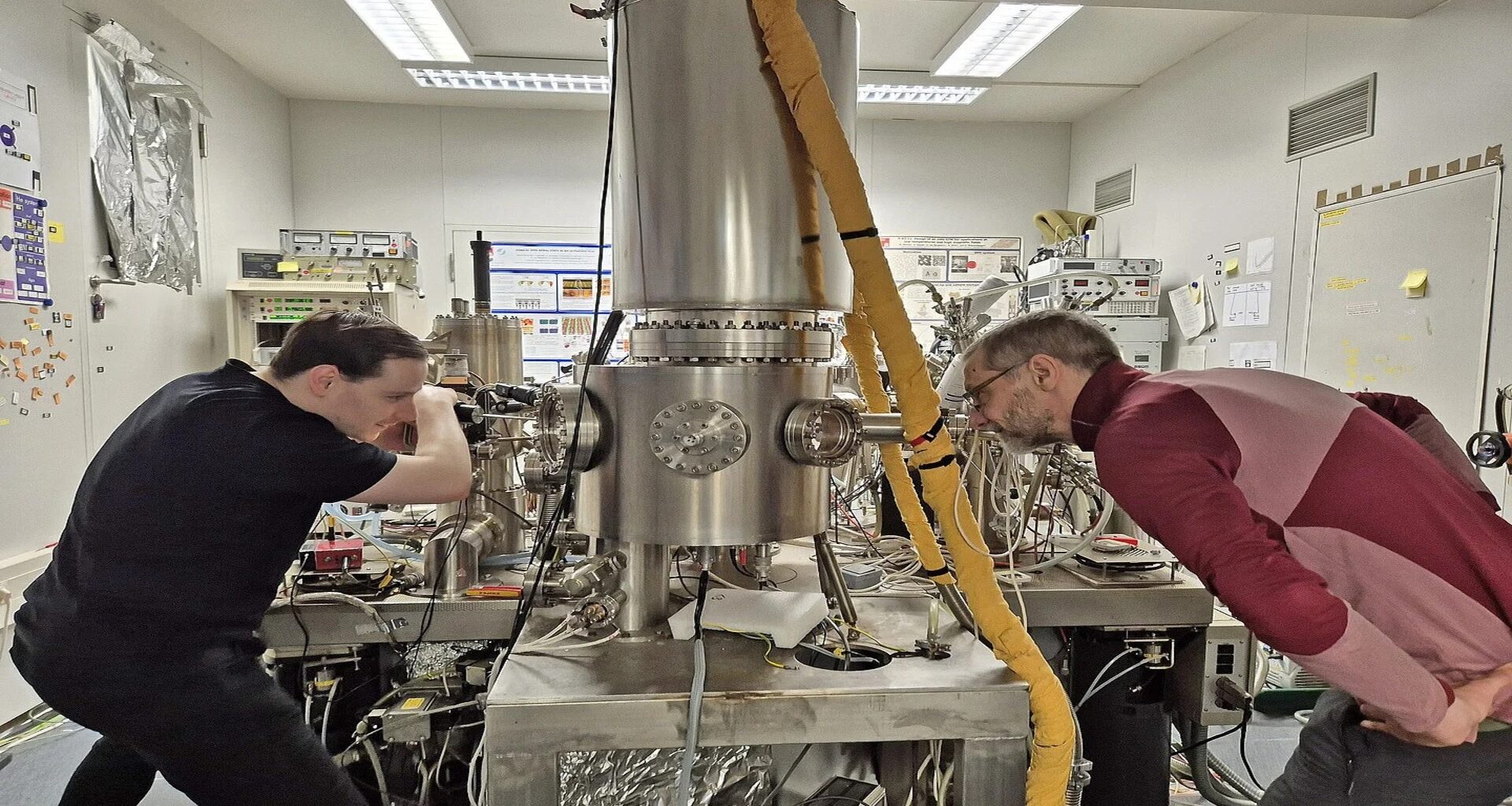Scientists in Germany have achieved a world first by moving individual atoms from one position to a precisely defined final one using magnetism, unlocking the potential for controlled atomic motion in nanotechnology and data storage.
The research team from the University of Kiel (CAU) and the University of Hamburg used a highly sensitive scanning tunneling microscope (STM) to manipulate atoms on a specially engineered magnetic surface.
Conducted at temperatures near absolute zero (four Kelvin), their experiment involved placing individual atoms, such as cobalt, rhodium, and iridium, onto a single atomic layer of manganese that had been carefully deposited on a rhenium crystal.
Despite the surface’s symmetrical hexagonal structure, the atoms did not move randomly, as would typically be expected due to thermal diffusion, but rather traveled consistently along defined magnetic pathways.
Steered movement instead of random motion
The discovery marks a massive step forward in understanding atomic diffusion, which refers to the movement of atoms through a material by exchanging places with vacancies in the lattice structure. The process is applied in the manufacturing of semiconductors and the construction of nanostructures.
While researchers have long theorized that magnetism could influence atomic movement, this is the first time an experiment has successfully demonstrated that individual atoms can be deliberately guided along a specific path.
 The adatom (red) moves one-dimensionally along the magnetic row when a short local voltage pulse is applied via the tip of the scanning tunneling microscope. Blue and yellow circles represent the surface atoms, and the white arrows indicate the orientation of their atomic bar magnets.
The adatom (red) moves one-dimensionally along the magnetic row when a short local voltage pulse is applied via the tip of the scanning tunneling microscope. Blue and yellow circles represent the surface atoms, and the white arrows indicate the orientation of their atomic bar magnets.
Credit: UHH/MIN/Kubetzka
“Such movements had been predicted theoretically but never experimentally observed,” Stefan Heinze, PhD, a professor at the Institute for Theoretical Physics and Astrophysics at CAU, said.
Along with Soumyajyoti Haldar, PhD, an affiliate professor of physics and astrophysics at CAU, Heinze performed quantum mechanical calculations using the high-performance computing network (NHR) in Berlin to explain the phenomenon.
The answer lies in quantum mechanics
Upon getting the results, the scientists found it even more remarkable that non-magnetic atoms like rhodium and iridium followed the magnetic tracks.
According to the team, the interaction between the surface and the atoms generates a small magnetic moment even in elements that are not inherently magnetic. These moments align with the magnetic orientation of the manganese layer, causing the atoms to prefer movement along specific magnetic directions.
Further simulations revealed that it is energetically easier for atoms to move along the magnetic rows than across them due to the magnetic interactions between the atom and the atoms in the surface layer. The researchers described this by comparing the atoms to tiny bar magnets that align with one another.
 The University of Kiel (CAU) campus.
The University of Kiel (CAU) campus.
Credit: Jürgen Haacks / University of Kiel (CAU)
Haldar explained that magnetization arises from the atom’s magnetic moment in magnetic elements like cobalt, magnetic atoms such as rhodium and iridium, a small magnetic moment is induced through their interaction with the surface, which then affects the direction in which they move.
As a result, the atoms tend to move along the magnetic rows of the surface, debunking earlier assumptions that magnetism did not affect the motion of individual atoms, a view these findings have now overturned.
“Magnetic properties of a surface can influence the mobility of individual atoms,” Haldar concludes in a press release. “This opens up new possibilities for steering atomic motion – for example, in applications involving nanotechnology, data storage, or developing novel materials.”
The study has been published in the journal Nature Communication.
